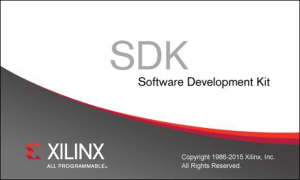Advanced Features and Techniques of Embedded Systems Software Design
Course Description
This course will help software engineers fully utilize the components available in the Zynq® All Programmable System on a Chip (SoC) processing system (PS). This course covers advanced Zynq All Programmable SoC topics for the software engineer, including advanced boot methodology, the NEON co-processor, programming PS system-level function control registers, the general interrupt controller, the DMA, Ethernet, and USB controllers, and the various low-speed peripherals included in the Zynq All Programmable SoC processing system.
Level
Embedded Software 4
Training Duration
1 day
Audience
Software design engineers interested in fully utilizing the Zynq extensible processing platform
Prerequisites
- Embedded Systems Software Design or equivalent knowledge
- C or C++ programming experience
- Conceptual understanding of embedded processing systems, including device drivers, interrupt routines, Xilinx Standalone library services, user applications, and boot loader operation
- Experience developing software for embedded processor applications
Software Tools
- Vivado® Design or System Edition 2017.3
Hardware
- Architecture: Zynq-7000 All Programmable SoC*
- Demo board: Zynq-7000 All Programmable SoC ZC702 or ZedBoard*
*This course focuses on the Zynq-7000 All Programmable SoC. Check with your local Authorized Training Provider for the specifics of the in-class lab board or other customization’s. After completing this comprehensive training, you will have the necessary skills to:
Skills Gained
After completing this comprehensive training, you will know how to:
- Implement an effective Zynq All Programmable SoC boot design methodology
- Create an appropriate FSBL image for flash
- Identify advanced Cortex™-A9 processor services for fully utilizing the capabilities of the Zynq All Programmable SoC
- Analyze the operation and capabilities of the DMA controller in the Zynq All Programmable SoC
- Examine the various Standalone library services and performance capabilities of the Ethernet and USB controllers in the Zynq All Programmable SoC
- Describe the Standalone library services available for low-speed peripherals that are contained in the Zynq All Programmable SoC PS
Course Outline
- Booting
- Overview {Lecture, Lab}
- Boot Memory Technologies {Lecture}
- Flow {Lecture}
- PS Processors {Lecture, Lab}
- PL {Lecture, Lab}
- Secure Boot {Lecture}
- FSBL {Lecture, Demo}
- General Interrupt Controller {Lecture}
- Processor Caching and SCLR {Lecture}
- NEON Co-Processing {Lecture}
- DMA
- Introduction and Features {Lecture}
- Block Design and Interrupts {Lecture}
- Read and Write {Lecture, Lab}
- High-Speed Peripherals ○
- Gigabit Ethernet {Lecture, Lab}
- USB {Lecture}
- Low-Speed Peripherals
- Overview {Lecture, Lab}
- UART {Lecture, Demo}
- CAN {Lecture, Demo}
- I2C {Lecture}
- SPI {Lecture}
- SD/SDIO {Lecture}
Topic Descriptions
- Booting ○
- Overview – Introduces the main points to how booting a processor is handled in Zynq All Programmable devices and MicroBlaze processors.
- Boot Memory Technologies – introduces the main points of the memories that can be booted or executed from.
- Flow – Provides a low-level view of the booting process.
- PS Processors – Introduces the concepts behind a single-core boot, a dual-core boot, and symmetric or asymmetric processing.
- PL – Introduces the concepts behind configuring the PL at boot.
- Secure Boot – Introduces the concepts behind secure booting.
- FSBL – Introduces the First Stage Boot Loader (FSBL).
- Overview – Introduces the main points to how booting a processor is handled in Zynq All Programmable devices and MicroBlaze processors.
- General Interrupt Controller – Introduces the general interrupt controller (GIC), its features, and some examples of its use.
- Processor Caching and SCLR – Introduces the concepts behind processing caching and the System-Level Control Register.
- NEON Co-Processing – Introduces the concepts behind the NEON co-processor.
- DMA
- Introduction and Features – Introduces the direct memory access controller.
- Block Design and Interrupts – Introduces the DMA block design and the DMA interrupts.
- Read and Write – Introduces the concepts behind DMA reading and writing.
- High-Speed Peripherals
- Gigabit Ethernet – Introduces the Gigabit Ethernet high-speed peripheral.
- USB – Introduces the USB high-speed peripheral.
- Low-Speed Peripherals
- Overview – Introduces the low-speed peripherals in the Zynq All Programmable SoC.
- UART – Introduces the UART low-speed peripheral.
- CAN – Introduces the CAN low-speed peripheral.
- I2C – Introduces the I2C low-speed peripheral.
- SPI – Introduces the SPI low-speed peripheral.
- SD/SDIO – Introduces the SD/SDIO low-speed peripheral.
- Overview – Introduces the low-speed peripherals in the Zynq All Programmable SoC.

Datum
06 februari 2020
Locatie
Core|Vision
Cereslaan 24
5384 VT
Heesch
Prijs
€ 0,00
of
9 Xilinx Training Credits
Informatie
Training brochure
Registratieformulier
Registratie op aanvraag, neem contact op met ons.

